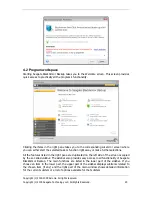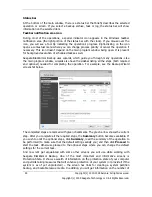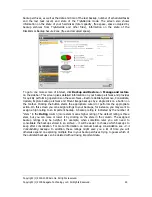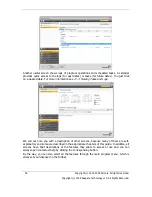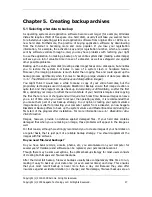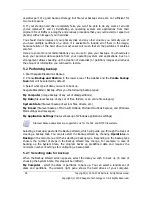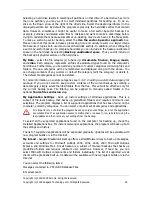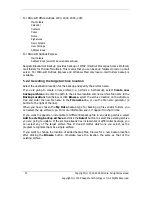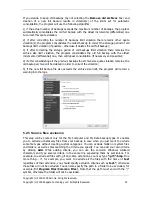
18 Copyright (c) 2000-2009 Acronis. All rights reserved.
Copyright (c) 2009 Seagate Technology LLC. All Rights Reserved.
last full backup. Generally, a differential backup will be restored faster than an incremental
one, as it does not have to process through a long chain of previous backups.
A standalone full backup might be an optimal solution if you often roll back the system to its
initial state or if you do not like to manage multiple files. If you are interested in saving only
the last data state to be able to restore it in case of system failure, consider the differential
backup. It is particularly effective if your data changes tend to be few compared to the full
data volume.
The same is true for incremental backup. These are most useful when you need frequent
backups and the ability to roll back to a specific point in time. Having created a full backup
once, if you then create an incremental backup each day of a month, you will get the same
result as if you created full backups every day. Incremental images are considerably smaller
than full or differential images.
Incremental or Differential?
The difference is typically that in an incremental backup, only the files changed or added
since the last time the backup ran are added to the archive. With a differential backup, all
the files changed or added since the initial full backup, are added to the archive. Thus,
differential backups take longer to run than incremental backups. When restoring from an
incremental backup, the program must copy the entire initial backup and then step through
each of the previous backups to retrieve all the updated files. A differential backup, on the
other hand, can be restored more quickly because the software must copy only the original
backup and the most recent one.
An incremental or differential backup created after a disk is defragmented might be
considerably larger than usual. This is because the defragmentation program changes file
locations on the disk and the backups reflect these changes. Therefore, it is recommended
that you re-create a full backup after disk defragmentation.
3.3 BlackArmor Backup
Secure Zone™
The BlackArmor Backup Secure Zone is a special, hidden partition on the computer system.
Ordinary applications cannot access it. In the Seagate BlackArmor Backup wizards’ windows,
the zone is listed along with all partitions available for storing archives.
The BlackArmor Backup Secure Zone is also available for the Try&Decide feature.
For information on how to create, resize or delete BlackArmor Backup Secure Zone using this
wizard, see
Chapter 9. Managing BlackArmor Backup Secure
Zone.
3.5 Viewing disk and partition information
You can change the way data is represented in all schemes you see in various wizards.
To the right are three icons:
Arrange Icons by, Choose Details
and
i
(Display the
properties of the selected item)
, the latter duplicated in the context menu opened by
right-clicking objects.
To sort messages by a particular column, click the header (another click will switch the
messages to the opposite order) or the
Arrange Icons by
button and select the column.
To select columns to view, right-click the headers line or left-click the
Choose Columns
button. Then flag the columns you want to display. When left-clicking the
Choose Columns
Содержание BlackArmor NAS 110
Страница 1: ......




















